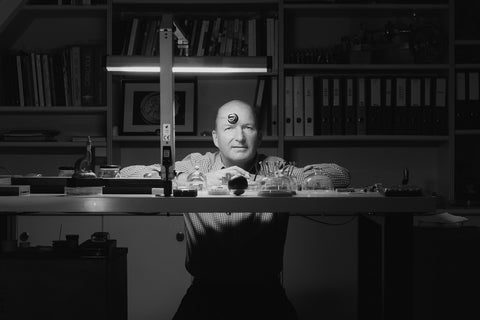Introduced around 2000, the Toric Tourbillon was the first tourbillon released by the young brand. The tourbillon has long been a rite of passage for many independent watchmakers looking to make a name for themselves. The visual appeal of the complication, its storied past and the skill needed to assemble one according to more traditional methods have all contributed to this.
The Parmigiani Fleurier Toric collection is inspired by the work of Abraham-Louis Breguet and features a range of classic complications, alongside more inventive ones. The name is derived from the geometric shape of a torus, evident in its pieces, which have stepped and fluted bezels – a detail inspired by classical Greek and Roman Doric columns as well as the curvature of the Golden Ratio.
In the first days of the manufacture, Parmigiani chose to rely on high-quality ébauches, which were modified, assembled, and finished in-house. This reference 2840 makes use of a Girard-Perregaux Three Bridges 9900 ébauche. Initially created for pocket watches, this movement has a historic lineage that stretches back to the 19th century, when it won first place in the 1867 and 1889 Paris World Exhibitions as well as the Neuchatêl Observatory Prize in 1911 – one of the most prestigious competitions to determine the accuracy of certain timepieces. The movement was miniaturised to wristwatch size in 1986 and presented at Baselworld five years later.
The Toric Tourbillon exposes the movement through an open-worked dial and sapphire caseback, but the minimalist features of the watch ensure that it does not overpower the wearer. Rather interestingly, the minute hand sits below the hour hand, which is due to the fact that the movement is an inverted version of the original Girard-Perregaux pocket watch movement from the 19th century.
If sold within the United Kingdom, this Parmigiani Fleurier Toric Tourbillon will be subject to 20% VAT


















































































































































































































